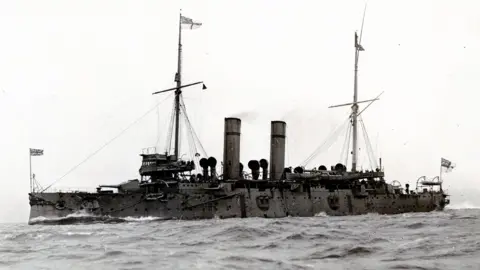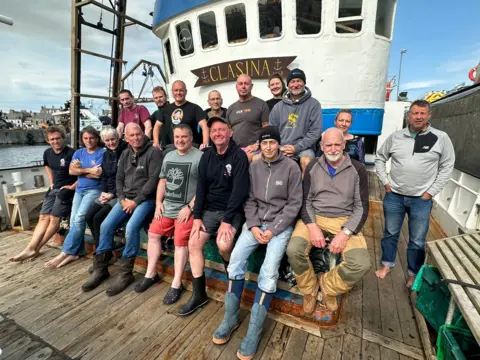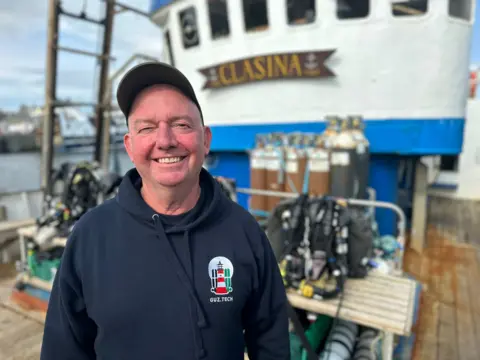Football
Lost wreck of WW1 ship HMS Hawke found in ‘remarkable’ condition

 Crown Copyright, Courtesy of the National Museum of the Royal Navy
Crown Copyright, Courtesy of the National Museum of the Royal NavyA wreck discovered off the Aberdeenshire coast is believed to be a lost Royal Navy warship sunk by a torpedo during World War One.
HMS Hawke was discovered by a team of divers about 70 miles east of Fraserburgh earlier this week in “remarkable” condition.
More than 500 of the ship’s crew died when it was attacked by a German U-boat in October 1914.
The ship caught fire and, following an explosion, sank in less than eight minutes with just 70 sailors surviving.
It is hoped that the wreckage will be formally identified by the Royal Navy in the coming weeks.
The wreckage was found by the Lost in Waters Deep group – which searches for shipwrecks to remember wartime losses in Scottish waters.
HMS Hawke, a 387ft (118m) long and 60ft (18m) wide Edgar-class protected cruiser, was first launched in 1891.
In 1911, it was badly damaged in a collision in the Solent with the Titanic’s sister ship, RMS Olympic.
When World War One broke out Hawke was deployed to the 10th Cruiser Squadron and took part in blockade duties between Shetland and Norway.
In October 1914, the squadron deployed further south in the North Sea as part of efforts to stop German warships from attacking troop convoys from Canada.

On 15 October 1914, the squadron was on patrol off the coast of Aberdeen when HMS Hawke was struck by a single torpedo from German submarine U-9
This major attack in the early stages of the war was an early indication of the Royal Navy’s vulnerability to German U-boats, even in the north of Scotland.
The wreck, the last resting place of 524 sailors, was located on 12 August, 360ft (110m) below the surface.
Steve Mortimer, a diver who is working alongside the Lost in Waters Deep project, told BBC Scotland that finding the location of HMS Hawke took a lot of hard work.
The team’s research involved going back to data from the time such as the U-boat commander’s day journal which gave an indication of where it had been when it fired the torpedo.
They also looked at the logs of other Navy cruisers which had “exchanged post” with HMS Hawke just before it was sunk, giving them a general area for where the ship might lie.
Another piece of data was an “obstruction” on the seabed reported by Scottish fisheries in the 1980s.
The dive ship investigated the obstruction site but found nothing.

However, just a kilometre away they found a huge shipwreck.
“It took years of research but the actual time on the ground was just a few hours,” Mr Mortimer said.
He said HMS Hawke had clearly deteriorated after a century on the seabed but it was still in remarkable condition.
“Lots of the decking is still in place – teak decking,” he said.
“There is a wonderful captain’s walkway around the back of the stern. There’s loads of guns because obviously she was a warship.
“There’s lots of Royal Navy crockery. It is fascinating. She clearly was taken completely by surprise because lots of the portholes are still open.”
Mr Mortimer said the area of the sea that the ship was in has few nutrients, which means the wreck has not been eaten away by organisms.
He said: “You can look into the portholes and see rooms with artefacts – teacups, bowls and plates just there on the floor.
“It’s a really remarkable time capsule.”











